Picfair is an opportunity for photographers to promote and sell their work online. It’s a cross between a stock image site and a sales profile. And anyone can create an account and start selling their work.
Picfair sounds like an excellent platform for professional photographers. But can you really make money using Picfair?
Our Picfair review looks at what you can expect when signing up for the program. We’ll tell you what it is and why it exists. And we’ll investigate whether their promises for photographers are real.
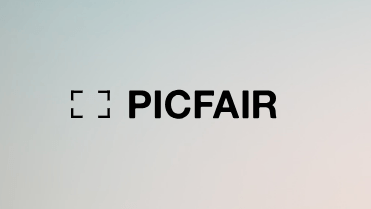
Picfair is an online marketplace where photographers can sell their work to individuals and publications. And it’s similar to a stock image website.
But Picfair puts the photographer first. Photographers keep control of their images, while Picfair facilitates the promotion and sale of their work.
Picfair was founded in 2014 by former journalist Benji Lanyado. While working in the British media, he was aware media publications used very limited resources for images.
There was very little outreach for photographers. And this meant they struggled to have their work shown in newspapers and magazines.
Plus, other photo-selling sites were often exploitative. Large percentages of sales would go to the platform. So photographers were left with very little after selling their work.
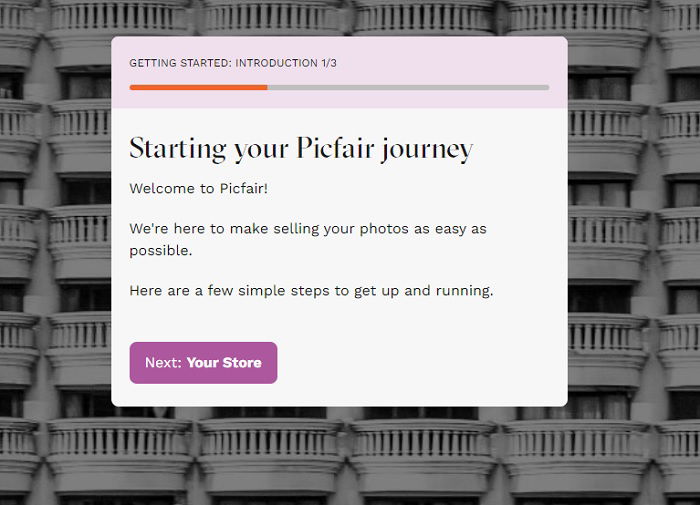
That’s why Picfair was created. It allows photographers to sell their photography work in a professional and fair environment.
Any photographer can set up an account. Their profile is their shop window. And they can create a personal market stall to promote and sell photographs.
Photographers reap the rewards of selling their work. And there’s transparency and autonomy for photographers on Picfair.
Picfair is also an image resource for sites like The Guardian, Fstoppers, and Amateur Photographer. And it is also a photography social media platform and community.
You can browse other photographers’ profiles. It has photography competitions you can enter. And you can access the photography tutorials if you need a few tips.
The idea behind Picfair is to make a fair and accessible global marketplace for photographers. And it’s a noble idea.
Making money as a photographer isn’t easy. And professional photographers need all the breaks they can get. But does Picfair deliver in practice?
We’ll break down the Picfair platform and experience and look at all the different facets of the website. We’ll take you through the sign-up process, user interface, pricing, and account management options.
The sign-up process is incredibly easy. You’re essentially creating your own website and online store.
It only takes a few clicks to complete. So in less than a few minutes, you have your own domain and a store home page.
Signing up for Picfair is 100% free if you opt for the Lite plan. But the Lite plan is essentially a Picfair trial and doesn’t allow you to sell your images.
With the Lite plan, you can set up a basic store and upload 20 images. You can create your bio and logo. And you can set prices for prints and downloads. But you can’t publish your store online.
You can only publish your store when signed up for the Picfair Plus plan. And you have to pay for this plan with a subscription fee. That means you can only make money from Picfair if you pay.
The subscription isn’t expensive. But it means you’re spending money before you can make money. Of course, you often have to spend money to make money. But this is an early demonstration that selling images on Picfair isn’t easy money. You have to work at it.
Once you’ve signed up, you’re prompted to upload images. You can then proceed to create your account, write your bio, and set prices.
Uploading photos is another easy and accessible process. But there are some rules about the photos you’re allowed to upload.
There’s nothing too surprising. But it’s best to be aware of them before creating an account.
They advise you to use high-resolution images, which is wise if you want to sell your photos to print media. There is a 50 MB limit per image file (minimum 800 pixels on both sides). But this is plenty.
Your images should not have watermarks, signatures, or timestamps. And there’s a rule against images with overlaid text.
These types of additions will put off potential buyers. They’re buying your photos to use in different media. So watermarks and timestamps will damage their market value.
You can not upload AI-generated images. Programs like Midjourney, Jasper Art, and Dall-E 2 can create photorealistic images from text prompts. But don’t think you can generate realistic AI images and sell them on Picfair. The Picfair image license does not cover AI images.

But don’t worry about online theft of your photos. Picfair adds its own watermarks during the moderation process. So your work can’t be stolen and used for free.
It’s a temporary watermark. And it’s only displayed when people view your photos in your Picfair store. (There is an option to use your own watermark in the paid version.)
Picfair has nothing against lightly edited photos or photos with filters. They understand most modern photographers like to touch up and fine-tune their work in software like Lightroom or Luminar Neo.
There are limits on edited work, though. Picfair insists the platform is for photography. So you can’t upload heavily edited photos, digital collages, illustrations, or CGI pieces.
This will be inconvenient for multimedia artists. But it ensures a level of authenticity in the photography sold. And photographers will know their photography won’t get lost in a sea of other digital art.
If your photos meet the rules above, uploading them is easy. You select the photos you want to sell from your library and add them to your sales page.
Your photos need a title and a brief description. And you add custom tags to make your photos easy to find within Picfair’s giant catalog.
Picfair then moderates all uploaded photos. They check to make sure the images meet their standards and guidelines.
The moderation process takes no longer than 24 hours. And then you can sell the images on your Picfair-powered store.
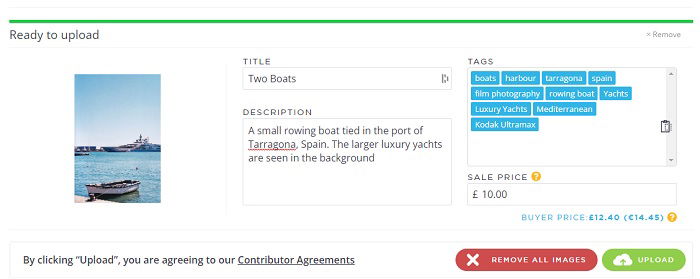
Photo licensing is a complicated topic. Getting your head around the different licenses and what they mean for your photography can be difficult.
But Picfair makes it easy to understand. And their license rules favor photographers. You keep the copyright for your images on Picfair. And there’s no exclusivity agreement.
So you can use the photos elsewhere while still advertising them in your Picfair store. And Picfair claims no ownership over the images uploaded by their users.
Picfair’s licenses are non-exclusive and single-use. When buyers purchase images as digital downloads, they do not take ownership of the copyright.
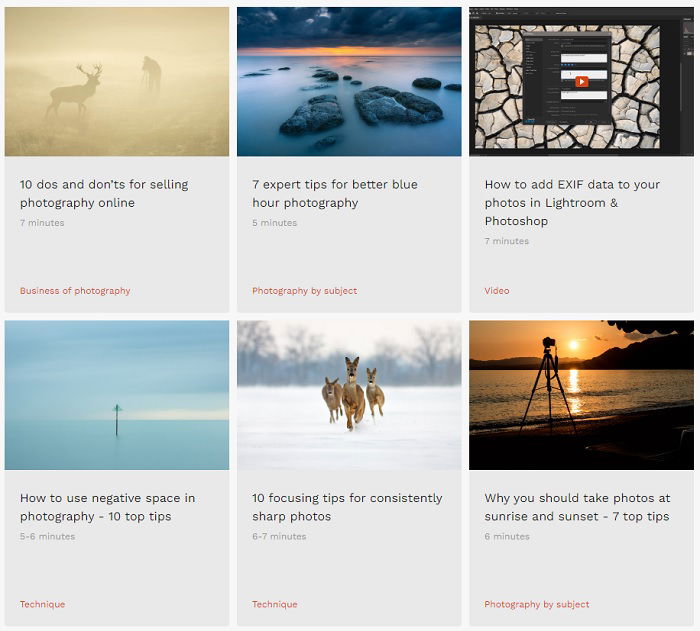
They purchase the image on a license basis. This means they can use the image once and only within the terms of the photo’s license.
Three main licenses determine how the buyer can use the photos. There are editorial and personal, commercial, and advertising options. And they list the terms for each license on their website.
The best thing about the Picfair licensing is their transparency. They take care of the licensing of the image for you.
But they give you all the information you need to understand each license. This means that photographers can make their own informed decisions.
Picfair puts the power of pricing in your hands. You set your prices. And you can sell every photo at a different price. So the price you charge is the amount you receive when you make a sale.
Picfair does charge a commission. It adds 20% to the price you’ve set for that image. So if you set a price of $10, the advertised price on your site will be $12.
You receive the full amount of the price you set. And Picfair gets its commission. But this system means the commission is charged to the buyer, not the seller.
This pricing system shows that Picfair means what it says about being a fairer marketplace for photographers. They’re honest about their commission.
The pricing is in your hands. And what you charge is what you receive.

The options for modifying your profile are limited if you’re a free Picfair user. You can choose a white or dark theme, and that’s about it.
You must sign up for Picfair Plus (the paid version) for all the other modification options. You pay a monthly subscription fee for a more personal and advanced Picfair store.
But other than the payments, what’s the difference between the free and paid account? First, you can only upload up to 20 images with the free version versus up to 10,000 with the paid one.
And remember, your store isn’t public when you’re on the Lite plan. You need to upgrade to Picfair Plus in order to display your work publicly.
There’s no added commission when you sell images from a Picfair Plus account. You set your prices and receive every penny in the sale.
The pricing is not dissimilar to the standard Picfair pricing. But it’s easier to set attractive prices while making money for yourself.

You also have far more options for personalizing your Picfair store with the paid account. You can choose from the multiple store templates. And you can add custom color themes and library layouts.
You also get full-screen slideshow functionality. And you have access to 15 Adobe presets you can add to your images through Lightroom, Photoshop, and Camera Raw.
A Picfair Plus account makes it easier to create a unique photography store. You don’t have to use the Picfair branding included in the free accounts.
You can create your own logo and watermark. And you can add your own marketing materials to make a bigger splash in the photography world.
The Picfair Plus accounts are excellent. They give photographers a professional website for e-commerce. But it’s a shame that most custom design options are hidden behind a paywall.
There are some other perks to selling and marketing your images on Picfair.
The main method of selling images on Picfair is via digital download. But Picfair also offers buyers high-quality printed products of your work. You can sell prints on photo paper or canvas.
That might sound like more hassle for you, but Picfair takes care of everything. The printing, resources, and shipping are all arranged by Picfair.
And there’s no additional cost in time or money for photographers. It’s just another buying option for people looking to purchase images.
Picfair understands that creating an account and uploading a few of your top images isn’t enough to create a business. They don’t make empty promises.
They’re honest that making a living by selling images isn’t easy. And Picfair provides material to help you out. This includes free marketing guides for all their users.
They have separate guides to help you sell images through all the main social media channels. So you can turn your social media profiles into sales funnels, giving followers access to your store.
They also have more general guides for photographers. Some have dos and don’ts for selling photographs online.
Other Picfari guides give helpful photography tips. So their global marketplace set of guides gives you a helping hand in a competitive environment.
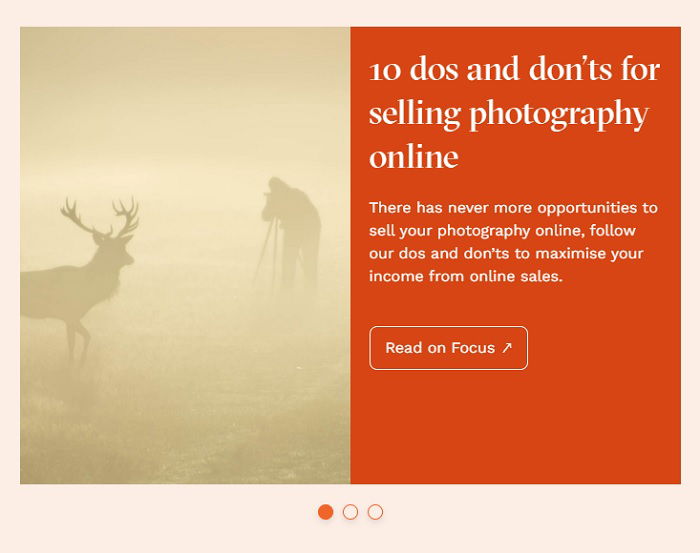
Picfair has stiff competition in the stock photo market. Tens of thousands of publications globally need images for their media. And Picfair is still small compared to some competitors.
Adobe Stock and iStock are two of the big hitters in the microstock market. They have extensive libraries full of varied images. They are excellent resources for publications that need images.
Unlike Picfair, their subscription plans allow users to download a certain amount of images per month. So buyers don’t purchase individual photos, which makes their life easier.
One problem these stock websites often have is the quality of their images. They’re often staged and very “stocky.” They look like stock images, not natural photographs.

That’s where Picfair has an advantage. The overall standard of the photography is excellent.
Picfair is also better from the photographer’s point of view. No other website gives photographers so much transparency and control.
And how much money you make is determined by the prices you set. Other sites offer very little return, even to productive contributors.
Yes, you can make money on Picfair. But don’t give up your day job just yet.
Picfair offers an excellent platform for you to display and sell your work. The free Lite version is now just a trial for creating a Picfair store. Your profile is only published publicly when you sign up to Picfair Plus and pay the subscription free. But it’s still an affordable way to sell images online.
Picfair is the best option for photographers in terms of transparency and rights. You don’t need a law degree to understand its photo licenses.
There’s no funny business when it comes to prices and commissions. And your work is well protected from theft.
But despite their noble philosophy, making sales on your images is still difficult. You can be the best photographer in the world. But you won’t sell anything unless you put some effort into marketing.
Picfair is honest about this. They don’t make any outlandish promises. And they don’t claim their platform is a get-rich-quick solution for photographers.
They advise their users to market their work. And they even provide guides to help you navigate the rocky road of online photo sales.
Picfair has its heart in the right place. And it appears their intentions are genuine. But that doesn’t mean all users will become rich from their Picfair domain.
Overall, Picfair does provide one of the best opportunities for photographers to sell their work online. And we hope our Picfair review helps you improve your chances of making money from the platform.
